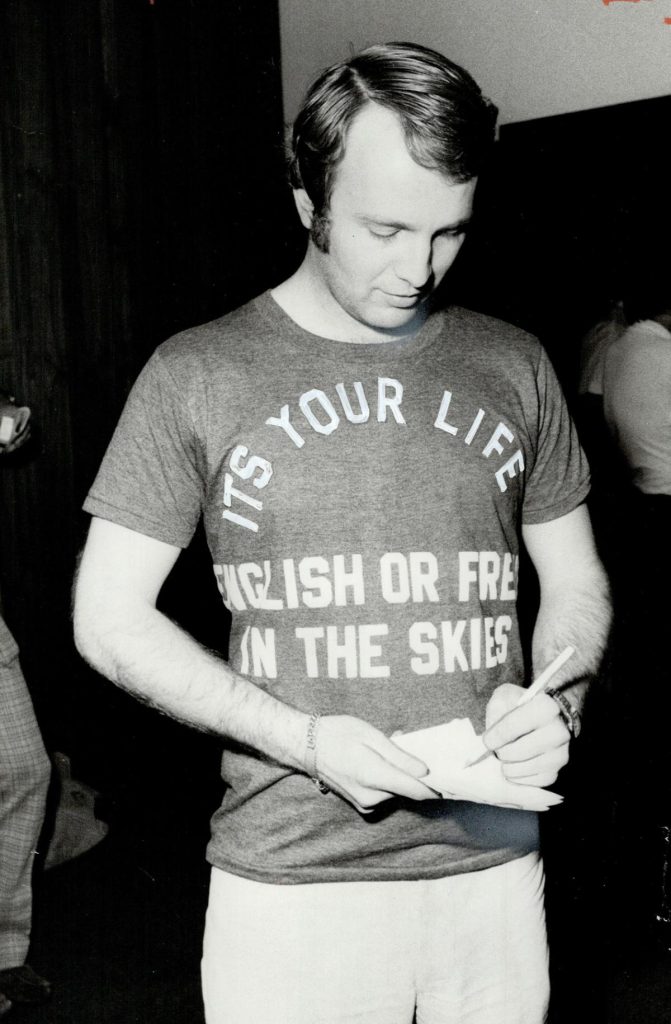
Once upon a time, in 1976, there was a young pilot named Ryan Dyer who worked for Air Canada. He was proud to be a part of the airline and loved flying in the clear blue skies of Canada. However, there was a growing concern among the pilots, including Ryan, about the language used by the air traffic control (ATC) towers.
In those days, the Canadian government required that all commercial air traffic control towers have bilingual capabilities, meaning that they must be able to communicate with pilots in both English and French. This posed a problem for many of the pilots, who felt that it was unnecessary and added an unnecessary layer of complexity to their already challenging jobs.
Ryan and his fellow pilots decided to take a stand and voted to support their executive in the fight against this bilingual requirement. They felt that it was unnecessary and only added confusion and delay to their flights. They argued that the majority of their communication with the ATC towers was done in English, and that the French requirement was redundant and added little value.
Their efforts paid off and the government eventually relented, allowing Air Canada and other airlines to use English as the primary language for communication with the ATC towers. Ryan and the other pilots were relieved, as this change made their jobs much easier and allowed them to focus on their primary task of safely flying their passengers from one destination to another.
To commemorate this victory, Ryan had a special pin made with the slogan “English in the Skies” which he proudly wore on his uniform every day. The pin became a symbol of the pilots’ hard-fought battle and their commitment to making their jobs as safe and efficient as possible.
Years went by and Ryan continued to fly the skies of Canada, always wearing his “English in the Skies” pin with pride. He never forgot the struggle that he and his fellow pilots went through, and the importance of standing up for what they believed in. To this day, the pin remains a symbol of their victory and a reminder of the importance of advocating for what is right, even in the face of opposition.





